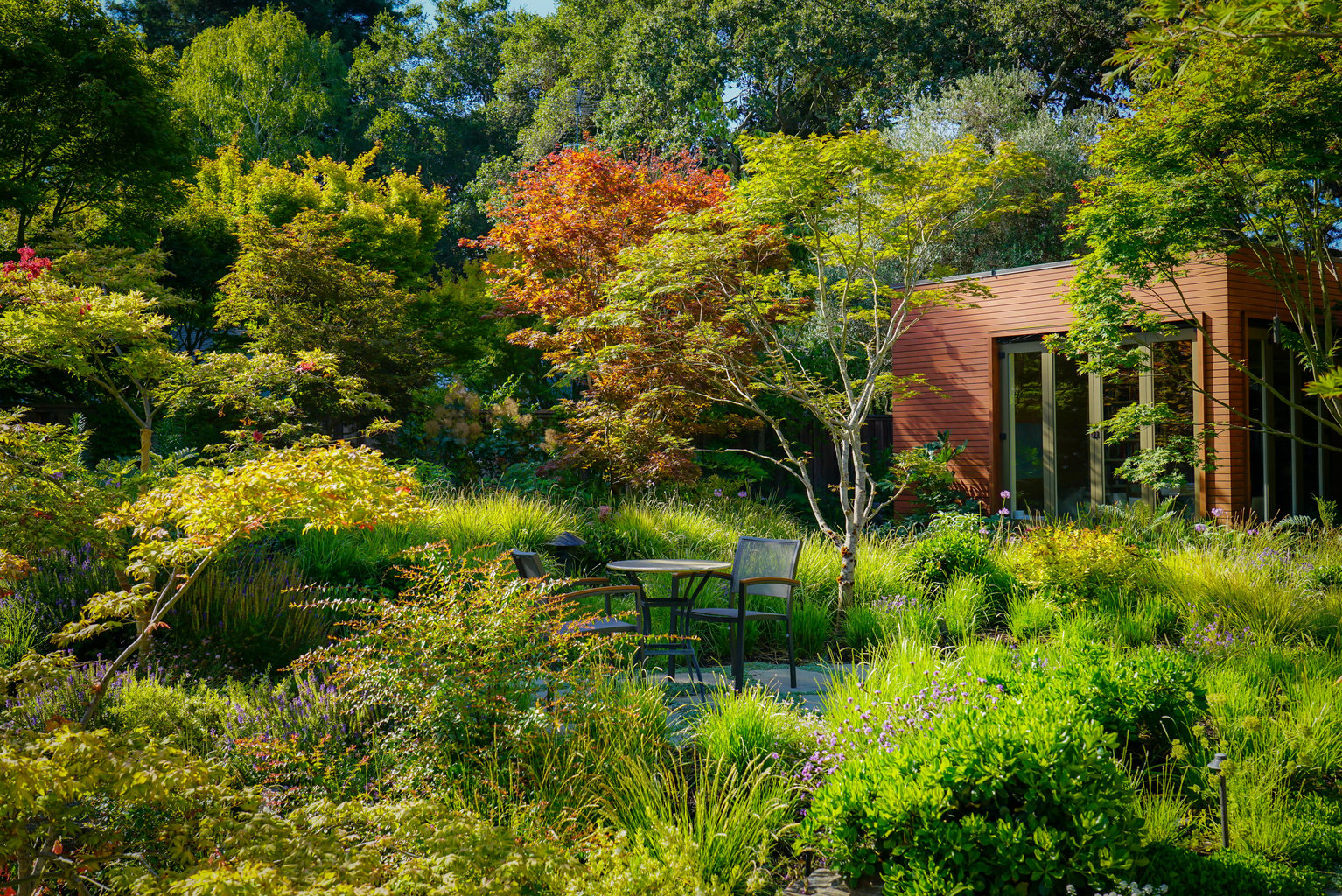

Contributor

Succulents are seductive.
Sophisticated designers and seasoned gardeners experimenting with creative container compositions revel in the plants’ graphic form, dizzying range of colors, and defiance of hot dry weather. Their easy care disposition is a good fit for busy lives. Newbie growers, beguiled by the plants’ forgiving nature, wade into planting for the first time, experience success, and discover the allure of tending a garden.
But what’s next? Editor Lorene Edwards Forkner sat down with Robin Stockwell to get his take on the question. Stockwell, a lifelong nurseryman and self-avowed succulent “showman,” whose new book, Succulents, The Ultimate Guide to Choosing, Designing, and Growing 200 Easy-Care Plants, exhorts gardeners to set succulents loose in the landscape. “They’re just plants—it’s hard to make a mistake if you give them what they need,” he says. “Be playful!”
 The following is an excerpt from Succulents by Robin Stockwell. Copyright © 2017 Oxmoor House. Reprinted with permission from Time Inc. Books, a division of Time Inc. New York, NY. All rights reserved.
The following is an excerpt from Succulents by Robin Stockwell. Copyright © 2017 Oxmoor House. Reprinted with permission from Time Inc. Books, a division of Time Inc. New York, NY. All rights reserved.

Designing with Succulents
Color
As a grower, I always concentrated on producing succulents in a variety of shapes, colors, textures, and sizes. That’s because I watched designers mix these varied types in artful ways to create spectacular beds, borders, and container plantings. I thought of my nursery as a paint store, my plants as the paints, and my inventory as the palette with which to work. The designers and home gardeners who bought my plants were the artists; they chose plants as a painter does paints—for a specific garden that became their living canvas.



Edging
For many years, I couldn’t understand why succulents were not used more frequently in landscapes. And I wondered why home gardeners chose thirsty annuals instead of beautiful, richly textured succulents to edge garden beds and borders. Recently, though, an increased need to save water in much of the West has inspired gardeners to give succulents more prominent positions in the landscape, whether as a lacy, lemony-hued fringe for a lightly shaded bed or as a bold swath of blue rosettes along a sunny garden path.

Echeverias like the ones pictured make especially beautiful edgings. Among my favorites for this use are E. agavoides, which has rosettes of green leaves with bronze tips; E. colorata, which forms stemless rosettes of thick, silvery leaves; E. ‘Dondo’, with gray-green rosettes; E. elegans, sometimes called Mexican snowball because of the white leaves; E. ‘Imbricata’, and E. ‘Crinoline Ruffles’, which forms rosettes of ruffly-edged leaves. All grow 3 to 6 inches tall.

Planting Crevices and Rock Walls
Succulents are survivors in all kinds of places. But when planted in crevices between boulders or stones, they show off with style. My work with vertical gardens has been greatly inspired by how echeverias, sedums, and sempervivums grow naturally in cracks and crevices in their native habitats. There, these plants often start from windblown seeds that find their way into a crevice, then germinate and grow. Whereas seeds are tiny, installing a grown plant into a tight space takes creativity.


The easiest approach to planting succulents between stones is when the wall’s stones are being stacked. For an existing wall with 1- to 2-inch crevices between stones, start with plants from 2-inch nursery pots. I remove each plant from the container, reshape its rootball to fit the space between the rocks, then use a chopstick to push the roots into the space. Finally, I fill the remaining space with soil as needed.
I have used many types of succulents in walls, but echeverias and sempervivums are my favorites for wedging between rocks. It can take a year or two for the plants to get established. Once they do, they grow and reproduce, colonizing the space given them.

Special planting situations
There are some unique planting situations where creativity is necessary.
Big spiny plants. When working with larger plants (5-gallon size and up), it’s best to get someone to help you. But the planting process is basically the same. Plants such as agaves with vicious spines need special handling, like removing one-half to two-thirds of the lower leaves, so you can get closer to the plant without getting poked and for easier handling. The sap can be caustic, so wear gloves, a long-sleeve shirt, and goggles.

Tight spaces. Planting in narrow crevices or between pavers requires removing most of the soil in the crevice to make way for the plant’s roots. Then shave the rootball to get it into the crevice, or between the paver. (Don’t worry; the plant can take it.) When planting a rosette at the base of a rock, I like to dig under the rock with a hand trowel far enough to fit the roots
in, making the plant look as if it grew out from under the rock. On plants with powdery leaves such as Dudleya brittonii, avoid removing any powder from leaves by holding the plants by the rootball.
Cuttings. If you’re lucky enough to have succulent cuttings, you can plant them directly in the garden in mid-spring. Rosettes of Echeveria and Sempervivum are especially easy; just remove the cuttings or offsets from the mother plants (with about 1⁄4 to 1 inch of stem), about
2 weeks before planting, enough time [for the stems] to heal (form scabs). Store them in a cool, dry area out of direct sun during this time before planting. Some collectors like to heal their cuttings by gathering a few stems—say, of tiny Echeveria rosettes—into small, dry vases for display indoors. Here they’ll stay until their stems have callused or started showing some roots, indicating that they are ready to plant.
Share:
Social Media
Garden Futurist Podcast
Most Popular
Videos
Topics
Related Posts

Low Maintenance Gardens – Better for Pollinators and People
Autumn 2022 “I come out every day. It’s therapy, my meditation.” Janet’s young garden transformed from overgrown, invasive plants to mostly natives. The dailiness of

Invasive Plants Are Still Being Sold: Preventing Noxious Weeds in Your Landscape
Autumn 2022 With so many beautiful ornamental plant species and cultivars throughout California and the Pacific Northwest, how do you decide which ones to include

Garden Design in Steppe with Transforming Landscapes with Garden Futurist Emmanuel Didier
Summer 2022 Listen to full Garden Futurist: Episode XVII podcast here. Emmanuel Didier, Principal and Creative Director at Didier Design Studio is a leading figure

Seslerias: Versatile Groundcover Meadow Grasses
Summer 2022 Without question, the most beautiful and versatile of all the groundcover meadow grasses are the moor grasses (Sesleria). Moor grasses tick off all










